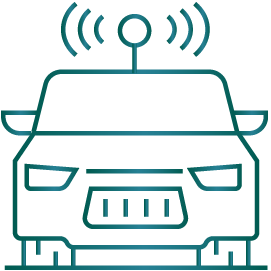
Passenger Economy
The auto industry and passenger economy are experiencing paradigm-shifting changes not seen since the birth of the automobile. Today the industry looks like this: the current auto industry produces approximately 80 million cars per year at an average price of approximately $19,000 for a total addressable market of $1.5 trillion dollars. Toyota has the largest market share globally at 13%, sells approximately 10 million cars and generates about $250 billion in annual revenue (a milestone that took the company over 70 years to achieve).
As autonomous driving and electric vehicles are gaining relevance, the business model for the auto industry is transforming and technology companies are taking a fresh approach with the idea of shared mobility. The future auto market, from their perspective, looks like this: approximately 10 trillion miles globally are driven annually at a cost of approximately $1 per mile for a total addressable market of $10 trillion dollars. A ride sharing model company with a nominal 1.7% market share globally would be traveling 170 billion miles a year at a price of $1.50 per mile, generating approximately $255 billion in revenue (some companies view this milestone as achievable in less than 7 years).
The average car is only used 4% of the day, massively under-utilized. The theory goes that by increasing the utilization rate of the car through shared mobility, the cost per mile goes down significantly. With the addition of autonomous driving the cost per mile goes down even further. As the cost per mile goes down many believe that miles driven will increase exponentially.
A study, prepared by Strategy Analytics, predicts autonomous vehicles will create a massive economic opportunity that will scale from $800 billion in 2035 (the base year of the study) to $7 trillion by 2050. An estimated 585,000 lives could be saved due to autonomous vehicles between 2035 and 2045, the study predicts.
Even as reclaimed parking spaces may fuel a downtown building boom, autonomous vehicles will encourage builders to push deeper into the suburban fringe, confident that homebuyers will tolerate longer commutes now that they don’t have to drive, according to the report, sponsored by a unit of Capital One Financial Corp. The potential impacts are profound for the auto, insurance, technology, media, airline , retail, real estate and energy industries.